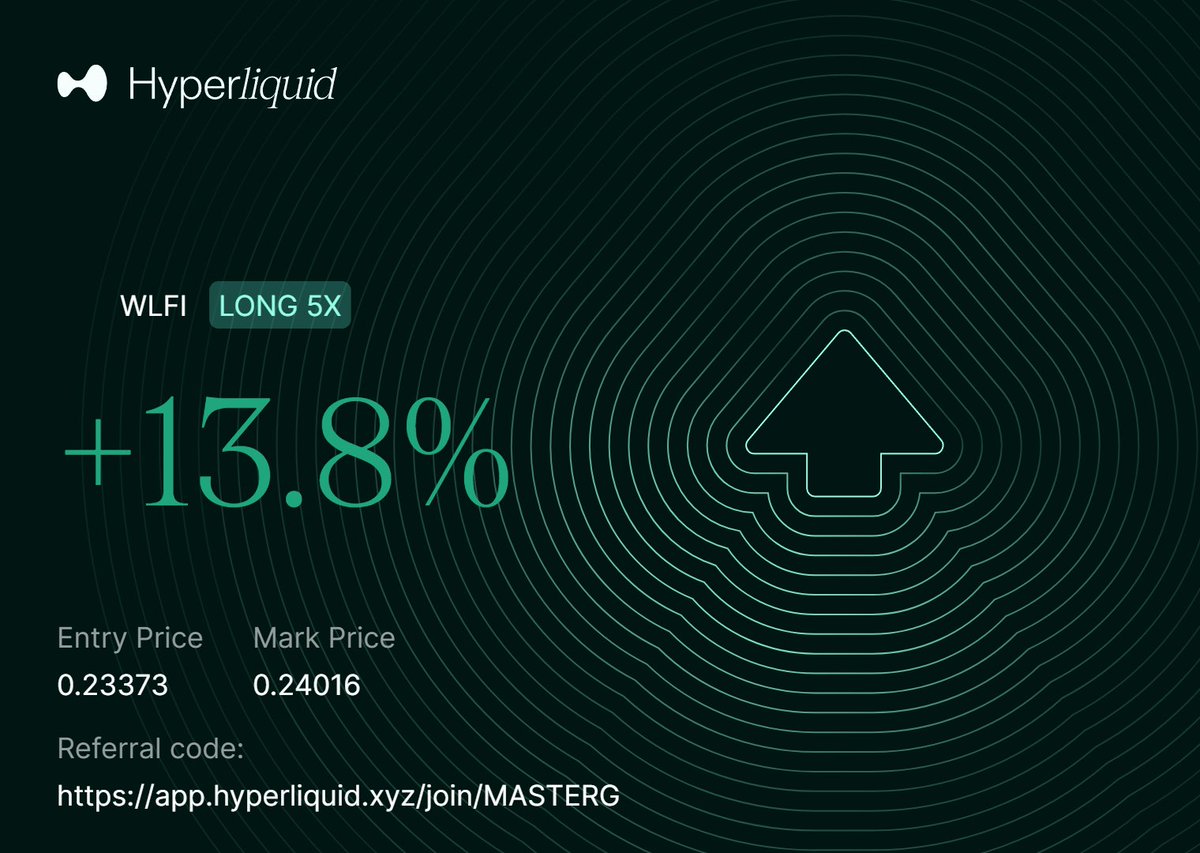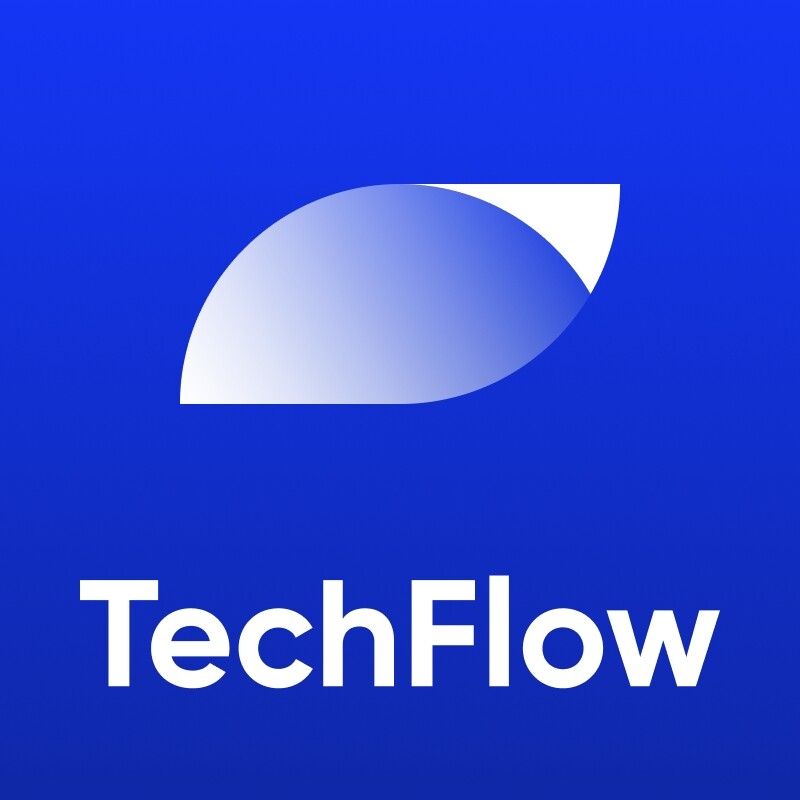Notice: The trading of this cryptocurrency is currently not supported on OKX. Continue trading with cryptocurrencies listed on OKX.

HYPE
Hyperliquid price
€38.17
+€0.43525
(+1.15%)
Price change for the last 24 hours
EUR
We can’t find that one.
Check your spelling or try another.
Check your spelling or try another.
Hyperliquid Feed
The following content is sourced from .

The OG loves buying the bottom; it's the only way to win! Crypto is not complicated to profit. It's two steps:
1. Buy the bottom
2. Sell the top!
It's the same formula for NFTs; that is why I bought @moonbirds at .8 ETH immediately after @spencer took over. Now we are in price discovery mode as he builds!
Trade $WLFI perps seamlessly on @HyperliquidX using my referral code.


Understand the new crypto trend from the sky-high opening of $WLFI
Written by: Haotian
Based on the Trump family concept alone, the circulating market value of @worldlibertyfi has reached $7B. With almost no reliable ecological project support, its market expectations surpass that of many Crypto Native blue-chip protocols such as AAVE, Uniswap, Ethena, and Pendle. Tell Me Why? The answer is clear: the current trend of build in the crypto industry has completely changed, and I would like to share some observations:
1) To Wall Street institutions, the popularity of a new narrative of Wall Street DATs has overshadowed many previous technical narratives such as layer2, BTCFi, and ZK, and it has been proven that the adoption from institutions will truly bring increments, even if most of them have bad intentions.
2) Focusing on capital efficiency, the market no longer focuses on the TPS arms race and superficial TVL shows, but begins to focus on how to generate more yield returns with limited funds.
For example, @Dolomite_io's liquidity multiplexing, @MitosisOrg's programmable liquidity innovation, @apr_labs's MEV value capture, and high-frequency trading flywheel all tell stories about how to improve capital efficiency.
3) Financial engineering > technical concept, the expansion of Crypto from finance to non-financial fields seems to be a strange circle, every cycle is talking about outward expansion of mass adoption, but in the end it will return to the most essential financial transaction scenario. The allure of complex cryptography and consensus mechanisms has long been eliminated in favor of structured product design with a deep understanding of financial business.
For example, @HyperliquidX's on-chain order book depth and CEX-level trading experience have made everyone almost forget about Decentralized, while @pendle_fi's Boros protocol innovation is like opening a Pandora's box of traditional finance. It turns out that sophisticated financial engineering design is much better than complex technical concepts;
4) The B2B2C model replaces the pure C-end narrative, and it has long been proven that there is only one business model in the currency circle that can serve retail investors well and drive retail investors: exchanges, which are both centralized and hegemonic and monopoly are not so cool. It is smart and wise for ordinary builders to innovate around Onchain and choose to serve institutions first and then let institutions serve retail investors.
Therefore, under TradFi's product positioning, services such as customized vaults, whitelist pools, KYC thresholds, and AMM optimization for institutions will become innovative directions.
5) Compliance has become the entry threshold for innovation, once upon a time, Crypto innovation compliance was not the first principle, basically an after-the-fact ticket, but under the new trend, it is more effective to get a license to make a product first than to make a product first and then seek compliance. In other words, compliance has become a new unfair competitive advantage, such as the dimensionality reduction crackdown on the currency circle by the TRUMP family, which has the advantage of government resources.
Coinbase's @base, Circle's USDC expansion path, and even the market expectations and valuation logic behind the Trump family's WLFI have all verified the efficiency of this path.
Above.
In a word: The next decade of Crypto may no longer belong to geeks who change the world, but to people who know how to package the on-chain world into financial products that Wall Street can understand.
About Hyperliquid (HYPE)
- Official website
- Github
About third-party websites
About third-party websites
By using the third-party website ("TPW"), you accept that any use of the TPW will be subject to and governed by the terms of the TPW. Unless expressly stated in writing, OKX and its affiliates ("OKX") are not in any way associated with the owner or operator of the TPW. You agree that OKX is not responsible or liable for any loss, damage and any other consequences arising from your use of the TPW. Please be aware that using a TPW may result in a loss or diminution of your assets.
Latest news about Hyperliquid (HYPE)

Hyperliquid’s HYPE Token: Why Arthur Hayes Thinks It Has 126x Upside Potential
Arthur Hayes argues that fiat decline drives stablecoin saving, funneling into crypto speculation—and Hyperliquid is the exchange built for that wave.
Aug 30, 2025|CoinDesk

Hyperliquid’s HYPE Hits Record High Above $50 on Trading Boom, Token Buybacks
Analysts highlight Hyperliquid's strong fundamentals but caution about potential risks from scheduled token unlocks and its high valuation.
Aug 28, 2025|CoinDesk

XPL Futures on Hyperliquid See $130M Wiped Out Ahead of the Plasma Token's Launch
Open interest on Hyperliquid’s XPL market plunged from $160 million to $30 million in minutes as a trader-triggered price spike caused mass auto-deleveraging.
Aug 27, 2025|CoinDesk
Learn more about Hyperliquid (HYPE)

What is Hyperliquid: the perpetual DEX HYPE behind HyperEVM
As one of the hallmark achievements in the crypto space, DEXs have transformed how crypto users engage with trading digital assets. Unlike their traditional centralized counterparts, DEXs pride themse
Jul 25, 2025|OKX|
Beginners
USDC and SOL: Exploring Hyperliquid’s High-Speed Trading Revolution
Introduction to USDC and SOL on Hyperliquid The cryptocurrency landscape is evolving rapidly, with decentralized exchanges (DEXs) like Hyperliquid leading the charge in innovation. Built on its propri
Sep 1, 2025|OKX
Hyperliquid Derivatives: How This Decentralized Platform is Disrupting the Crypto Market
What Are Hyperliquid Derivatives? Hyperliquid derivatives represent a groundbreaking innovation in the cryptocurrency market, offering a decentralized alternative to traditional derivatives trading pl
Aug 30, 2025|OKX
XPL and WLFI Token: How Whale Activity and Hyperliquid's New Method Shaped Market Volatility
Understanding the Impact of Hyperliquid's New Trading Method on XPL and WLFI Volatility Hyperliquid's innovative mark price calculation method has introduced significant changes to the cryptocurrency
Aug 30, 2025|OKX
Hyperliquid FAQ
How much is 1 Hyperliquid worth today?
Currently, one Hyperliquid is worth €38.17. For answers and insight into Hyperliquid's price action, you're in the right place. Explore the latest Hyperliquid charts and trade responsibly with OKX.
What is cryptocurrency?
Cryptocurrencies, such as Hyperliquid, are digital assets that operate on a public ledger called blockchains. Learn more about coins and tokens offered on OKX and their different attributes, which includes live prices and real-time charts.
When was cryptocurrency invented?
Thanks to the 2008 financial crisis, interest in decentralized finance boomed. Bitcoin offered a novel solution by being a secure digital asset on a decentralized network. Since then, many other tokens such as Hyperliquid have been created as well.
Will the price of Hyperliquid go up today?
Check out our Hyperliquid price prediction page to forecast future prices and determine your price targets.
Monitor crypto prices on an exchange
Watch this video to learn about what happens when you move your money to a crypto exchange.
Disclaimer
The social content on this page ("Content"), including but not limited to tweets and statistics provided by LunarCrush, is sourced from third parties and provided "as is" for informational purposes only. OKX does not guarantee the quality or accuracy of the Content, and the Content does not represent the views of OKX. It is not intended to provide (i) investment advice or recommendation; (ii) an offer or solicitation to buy, sell or hold digital assets; or (iii) financial, accounting, legal or tax advice. Digital assets, including stablecoins and NFTs, involve a high degree of risk, can fluctuate greatly. The price and performance of the digital assets are not guaranteed and may change without notice.
OKX does not provide investment or asset recommendations. You should carefully consider whether trading or holding digital assets is suitable for you in light of your financial condition. Please consult your legal/tax/investment professional for questions about your specific circumstances. For further details, please refer to our Terms of Use and Risk Warning. By using the third-party website ("TPW"), you accept that any use of the TPW will be subject to and governed by the terms of the TPW. Unless expressly stated in writing, OKX and its affiliates (“OKX”) are not in any way associated with the owner or operator of the TPW. You agree that OKX is not responsible or liable for any loss, damage and any other consequences arising from your use of the TPW. Please be aware that using a TPW may result in a loss or diminution of your assets. Product may not be available in all jurisdictions.
OKX does not provide investment or asset recommendations. You should carefully consider whether trading or holding digital assets is suitable for you in light of your financial condition. Please consult your legal/tax/investment professional for questions about your specific circumstances. For further details, please refer to our Terms of Use and Risk Warning. By using the third-party website ("TPW"), you accept that any use of the TPW will be subject to and governed by the terms of the TPW. Unless expressly stated in writing, OKX and its affiliates (“OKX”) are not in any way associated with the owner or operator of the TPW. You agree that OKX is not responsible or liable for any loss, damage and any other consequences arising from your use of the TPW. Please be aware that using a TPW may result in a loss or diminution of your assets. Product may not be available in all jurisdictions.

































Socials